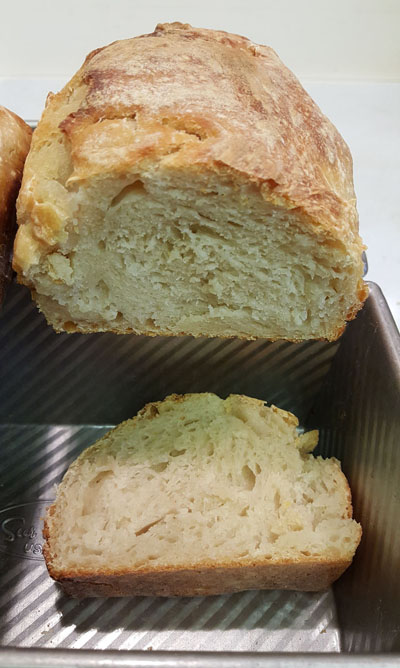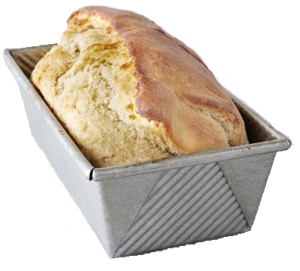SOURDOUGH
NATION
AVAILABLE IN SMALL BATCHES

. read more."
|
| The Science of Sourdough |
Sourdough is a culture of yeasts and lactobaccili (beneficial bacteria) that occur naturally in bread flour and dough. The yeasts are more varied and less concentrated than baker’s yeast, so they raise the dough more slowly. The lactic acid bacteria requires up to 6 hours fermentation to produce their extraordinary results. Sourdough is a thousand plus year old simple method for making bread. You take some starter, refresh it with multiple times its own weight of fresh flour and water and let this ferment for some hours until the yeast population has grown. You use most of this dough to make bread by adding more flour, water and salt, and keep a little bit back as your starter for the next batch of bread. (You need not fuss over and ‘feed’ your starter regularly: we’re talking fermentation here, not rocket science. Established starters will keep dormant in the refridgerator for days, weeks or months between bakes.) References 1. Katina, K et al, Potential of sourdough for healthier cereal products, Trend Food Sci Technol, 2005; 16: 104–112. 2. Gänzle, MG et al, Proteolysis in sourdough fermentations: mechanisms and potential for improved bread quality, Trend Food Sci Technol, 2008; 19: 513-52. 3. Di Cagno, R et al, Sourdough bread made from wheat and non-toxic flours and started with selected lactobacilli is tolerated in coeliac sprue patients, Appl Environ Microbiol, 2004; 70(2): 1088-96. 4. Rizzello, CG et al, Highly efficient gluten degradation by lactobacilli and fungal proteases during food processing: new perspectives for celiac disease, Appl Environ Microbiol, 2007; 73(14): 4499-507. 5. Di Cagno, R et al, Use of selected sourdough strains of Lactobacillus for removing gluten and enhancing the nutritional properties of gluten-free bread, J Food Prot, 2008; 71(7): 1491-5. 6. Di Cagno, R et al, Proteolysis by sourdough lactic acid bacteria: effects on wheat flour protein fractions and gliadin peptides involved in human cereal intolerance, Appl Environ Microbiol, 2002; 68(2): 623-33. 7. Coda,R et al, Selected Lactic Acid Bacteria Synthesize Antioxidant Peptides during Sourdough Fermentation of Cereal Flours, App Environ Microbiol, 2012; 78(4): 1087–1096. 8. Rizzello, CG et al, Synthesis of the Cancer Preventive Peptide Lunasin by Lactic Acid Bacteria During Sourdough Fermentation, Nutri Cancer, 2012; 64: 1, 111-120 9. Nonaka, Y et al, Antiallergic effects of Lactobacillus pentosus strain S-PT84 mediated by modulation of Th1/Th2 immunobalance and induction of IL-10 production, Int Arch Allergy Immunol, 2008; 145(3): 249-57. 10. Poutanen K et al, Sourdough and cereal fermentation in a nutritional perspective, Food Microbiol, 2009; 26: 693–699. 11. Van Baarlen, P et al, Differential NF-kB pathways induction by Lactobacillus plantarum in the duodenum of healthy humans correlating with immune tolerance, Proc Natl Assoc Sci, 2009; 106: 2371–2376. 12. Leenhardt, F et al, Moderate decrease of pH by sourdough fermentation is sufficient to reduce phytate content of whole wheat flour through endogenous phytase activity, J Agric Food Chem, 2005; 53: 98-102. 13. Lopez, H W et al, Making bread with sourdough improves mineral bioavailability from reconstituted whole wheat flour in rats, Nutrition, 2003; 19(6): 524-530. 14. Fredriksson, H et al, Fermentation Reduces Free Asparagine in Dough and Acrylamide Content in Bread, Cereal Chem, 2004; 81(5): 650-653. 15. Östman, E.M. et al, On the Effect of Lactic Acid on Blood Glucose and Insulin Responses to Cereal Products: Mechanistic Studies in Healthy Subjects and In Vitro. J Cereal Science, 2002; 36: 339-46.
|
